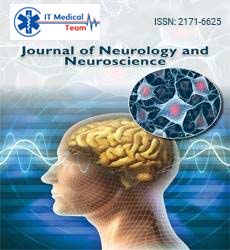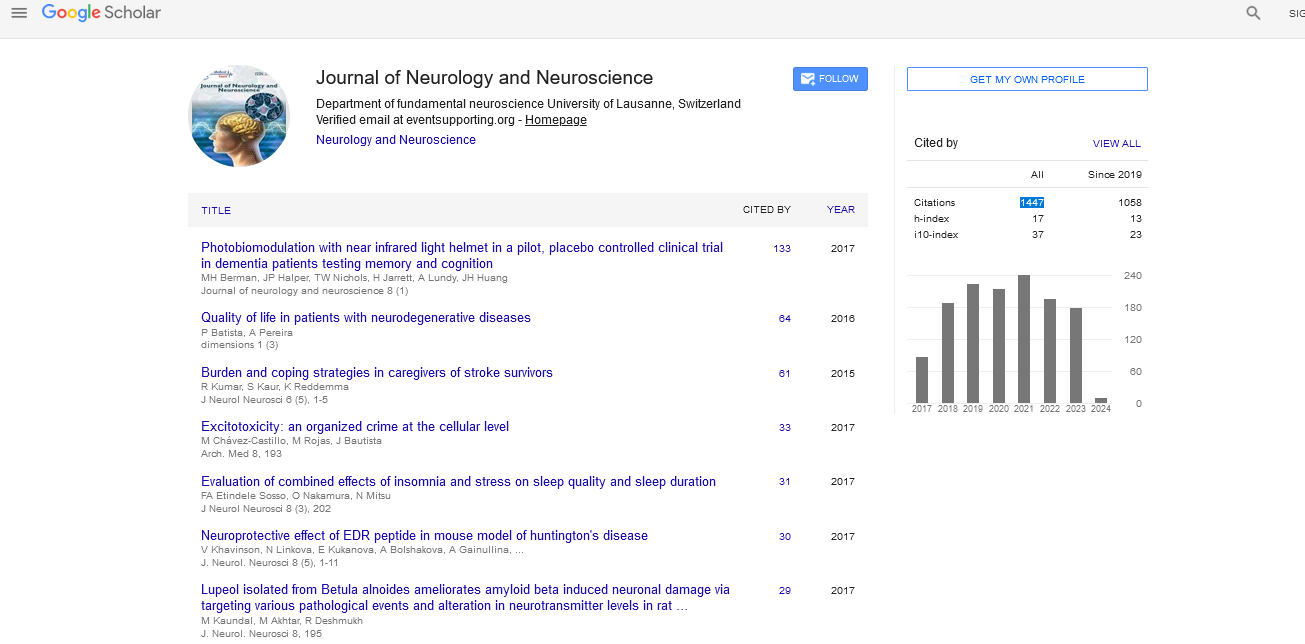Mini Review - (2023) Volume 14, Issue 1
Blood-brain barrier: Challenges and opportunities for the treatment of neurological disorders
Liangfang Schwartz*
Department of Pharmacology, University of California, San Diego, USA
*Correspondence:
Liangfang Schwartz, Department of Pharmacology, University of California, San Diego,
USA,
Email:
Received: 31-Dec-2022, Manuscript No. ipjnn-23-13635;
Editor assigned: 03-Jan-2023, Pre QC No. P-13635;
Reviewed: 17-Jan-2023, QC No. Q-13635;
Revised: 23-Jan-2023, Manuscript No. R-13635;
Published:
31-Jan-2023
Abstract
The blood-brain barrier (BBB) is a specialized system of blood vessels
that controls the exchange of substances between the blood and the
brain. It is composed of tightly packed endothelial cells, surrounded
by astrocytes and pericytes, which create a selective barrier that
restricts the passage of molecules based on their size, polarity, and
charge. The BBB serves as a protective barrier, preventing the entry of
harmful substances while allowing essential nutrients to pass through.
However, it can also limit the delivery of therapeutic drugs to the
brain, posing a challenge for the treatment of neurological disorders.
The BBB is a complex and fascinating system that continues to be the
subject of ongoing research in neuroscience and pharmacology.
Keywords
Blood-brain barrier; Endothelial cells; Astrocytes; Selective
barrier; Protective barrier
Introduction
The blood-brain barrier (BBB) is a highly specialized
system of blood vessels that regulates the exchange of
substances between the circulating blood and the brain.
It is a complex and intricate structure that plays a crucial
role in maintaining the brain's homeostasis by preventing
the entry of harmful substances, while allowing essential
nutrients and gases to pass through. The BBB is composed
of tightly packed endothelial cells that line the walls of
brain capillaries, which are surrounded by astrocytes and
pericytes. Together, these cells create a selective barrier
that restricts the passage of molecules based on their
size, polarity, and charge. While the BBB serves as an
important protective barrier, it can also limit the delivery
of therapeutic drugs to the brain, posing a challenge for
the treatment of neurological disorders. In this context,
understanding the function and regulation of the BBB is
a critical area of research in the fields of neuroscience and
pharmacology [1].
Literature Review
The blood-brain barrier (BBB) is a highly specialized
system of blood vessels that protects the brain from
harmful substances and regulates the exchange of essential
nutrients and gases. The BBB is composed of tightly
packed endothelial cells, surrounded by astrocytes and
pericytes, which create a selective barrier that restricts
the passage of molecules based on their size, polarity, and
charge [2]. Understanding the function and regulation
of the BBB is critical for the treatment of neurological
disorders, as it can limit the delivery of therapeutic
drugs to the brain. Recent studies have shed light on the
molecular mechanisms underlying BBB transport and
regulation. Transporters, such as P-glycoprotein (P-gp),
play a critical role in controlling the entry of drugs into the
brain. Various physiological and pathological factors, such
as inflammation and hypoxia, can alter BBB permeability
and disrupt its function [3].
In addition to its protective function, the BBB also
plays a crucial role in maintaining the brain's homeostasis
by regulating the exchange of essential nutrients and gases.
For example, glucose transport across the BBB is mediated
by specific transporters, such as GLUT1 and SGLT1, which
are critical for brain metabolism. Furthermore, advances in
imaging technologies, such as magnetic resonance imaging
(MRI) and positron emission tomography (PET), have
allowed for non-invasive visualization and quantification
of BBB function in vivo. These techniques have enabled researchers to study BBB dysfunction in various neurological
disorders, such as Alzheimer's disease and stroke. Overall,
the BBB is a complex and fascinating system that continues
to be the subject of ongoing research and investigation
in the fields of neuroscience and pharmacology. Further
understanding of the BBB's function and regulation
could lead to the development of novel treatments for
neurological disorders [4].
Discussion
The blood-brain barrier (BBB) is a critical component
of the central nervous system that regulates the exchange
of substances between the blood and the brain. The BBB
serves as a protective barrier, preventing the entry of harmful
substances into the brain while allowing essential nutrients
to pass through. However, it can also limit the delivery of
therapeutic drugs to the brain, posing a challenge for the
treatment of neurological disorders. Recent research has
shed light on the molecular mechanisms underlying BBB
transport and regulation. Understanding these mechanisms
is crucial for the development of novel treatments for
neurological disorders. Transporters, such as P-glycoprotein
(P-gp), play a critical role in controlling the entry of drugs
into the brain. Targeting these transporters could enhance
the delivery of therapeutic drugs to the brain, improving
their efficacy [5].
Furthermore, advances in imaging technologies have
enabled researchers to study BBB dysfunction in various
neurological disorders. For example, studies have shown
that BBB dysfunction plays a role in the pathogenesis of
Alzheimer's disease and stroke. Understanding the role of BBB dysfunction in these diseases could lead to the
development of new diagnostic tools and therapies. In
addition, recent studies have highlighted the potential of
the BBB as a target for drug development. By selectively
targeting the BBB, drugs could be delivered specifically
to the brain, minimizing off-target effects and improving
therapeutic outcomes.However, challenges remain in
developing effective therapies that can cross the BBB. The
selective barrier properties of the BBB limit the entry of
large molecules, such as therapeutic proteins, into the
brain. Strategies such as nanoparticle-based drug delivery
systems and the use of cell-penetrating peptides are being
explored to overcome these challenges [6].
Conclusion
The BBB is a critical component of the central nervous
system that regulates the exchange of substances between
the blood and the brain. Advances in our understanding
of BBB function and regulation have the potential to lead
to the development of novel treatments for neurological
disorders. However, challenges remain in developing
effective therapies that can cross the BBB, and further
research is needed to overcome these challenges.
Acknowledgement
None.
Conflict of Interest
None.
References
- Abbott NJ, Patabendige AA, Dolman DE, et al. Structure and function of the blood–brain barrier. Neurobiol Dis. 2010; 37(1):13-25.
Google Scholar, Crossref, Indexed at
- Daneman R, Prat A. The blood–brain barrier. Cold Spring Harb Perspect Biol. 2015; 7(1):a020412.
Google Scholar, Crossref, Indexed at
- Chen X, Ghribi O, Geiger JD. Caffeine protects against disruptions of the blood-brain barrier in animal models of Alzheimer's and Parkinson's diseases. Am J Alzheimer's Dis. 2010; 20(s1):127-141.
Google Scholar, Crossref, Indexed at
- Lajoie JM, Shusta EV. Targeting receptor-mediated transport for delivery of biologics across the blood-brain barrier. Annu Rev Pharmacol Toxicol. 2015; 55:613-631.
Google Scholar, Crossref, Indexed at
- Obermeier B, Daneman R, Ransohoff RM. Development, maintenance and disruption of the blood-brain barrier. Nat med. 2013; 19(12):1584-1596.
Google Scholar, Crossref, Indexed at
- Pardridge WM. Blood–brain barrier drug delivery of IgG fusion proteins with a transferrin receptor monoclonal antibody. Expert Opin Drug Deliv. 2015; 12(2):207-222.
Google Scholar, Crossref, Indexed at





